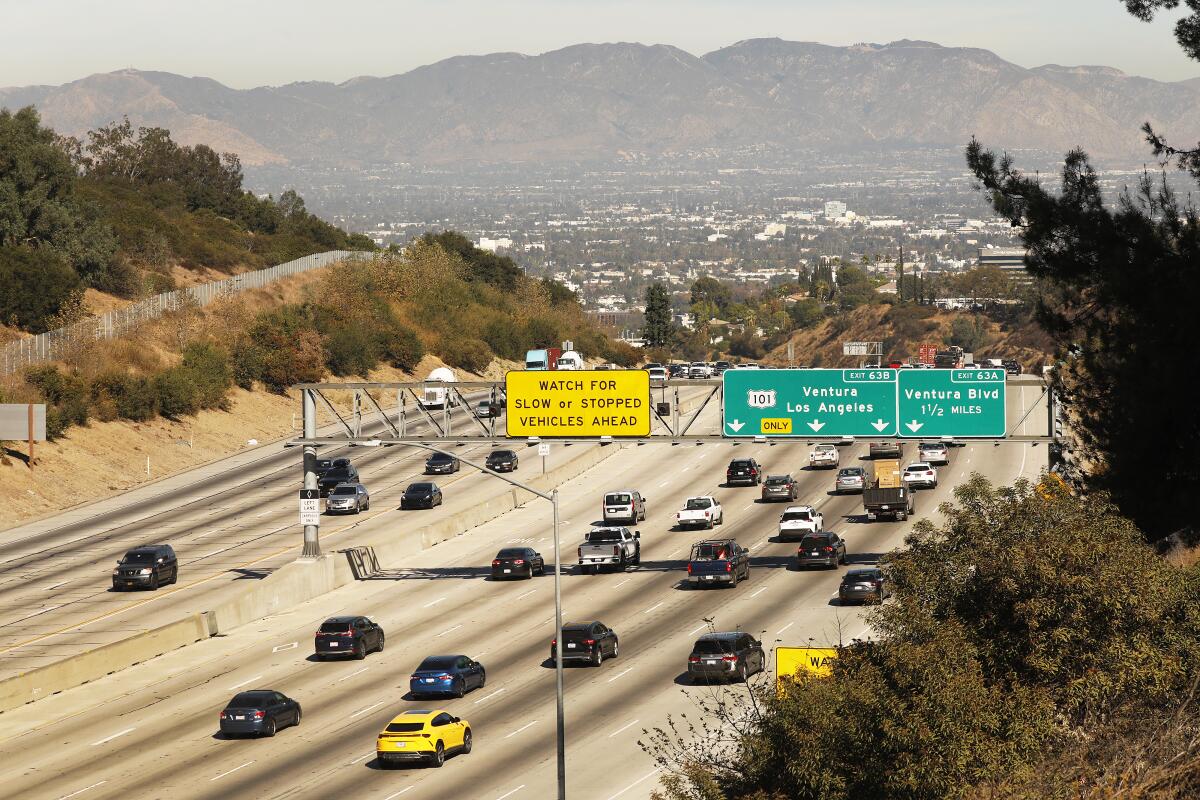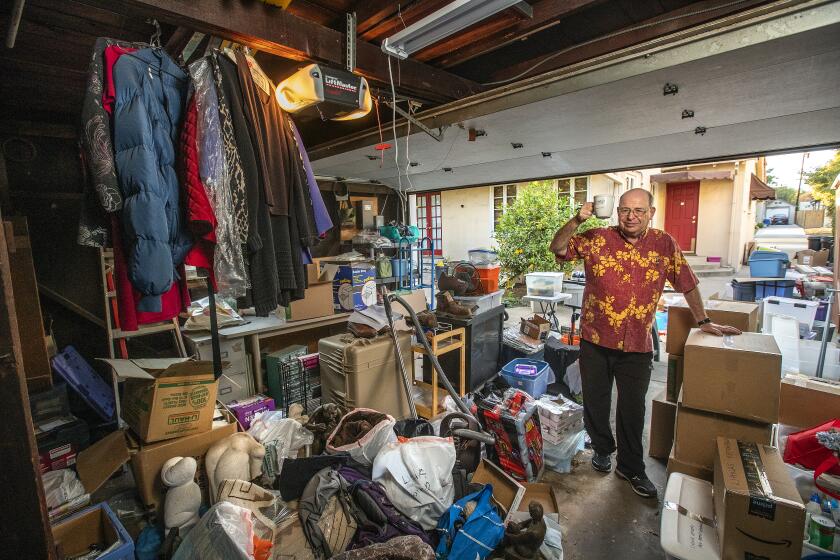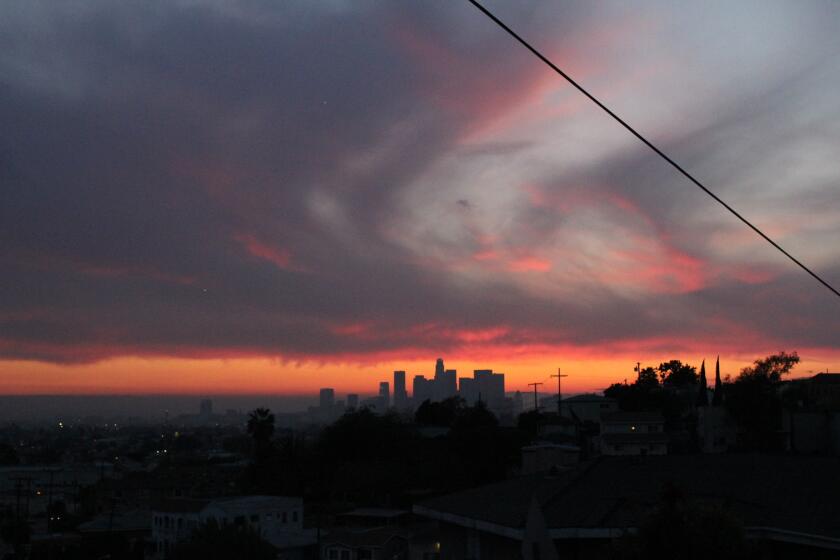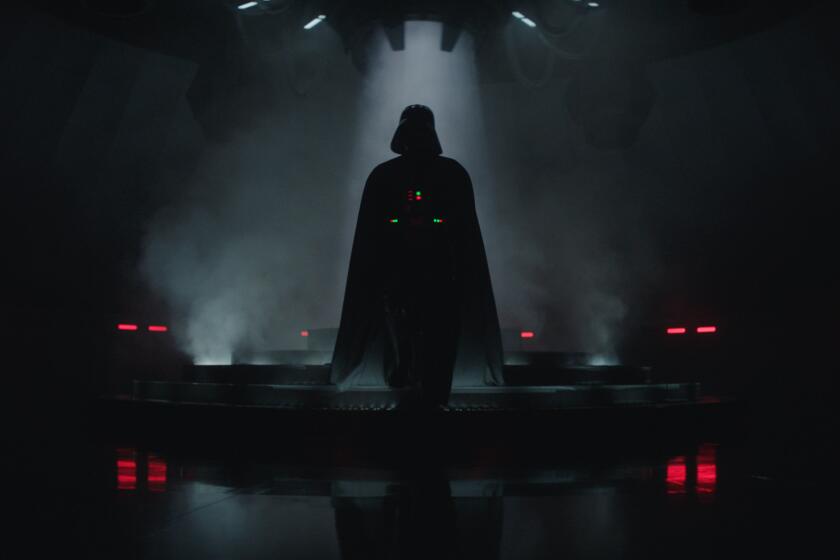Get a grip, Angelenos. After months stuck at home, we’ve all forgotten how to drive

- Share via
Hey, Angelenos, I realize there is a lot going on and much of it is bad, but could we please, as a city, do our very best to remember how to drive?
In the early months of the pandemic, empty L.A. freeways became a surreal symbol of a once-surging city gone still. Since May, however, traffic has been steadily increasing but it is far from back to “normal.” There have always been plenty of bad drivers in Los Angeles, but now driving while oblivious threatens to become, well, another pandemic.
I understand that, for those of us fortunate enough not to work on the front lines, COVID-19 has curtailed our regular vehicular exercise, our commuting, dating and/or drives to youth soccer tournaments, and public health precautions still dictate that we should all be sticking as close to home as possible. But the bafflingly bad — and more than occasionally dangerous — driving choices I have seen and heard about lately lead me to fear that Angelenos are letting themselves go, allowing their unique local skill set to atrophy to a perilous point.
COVID-19 has changed many things, but traffic lanes do still matter, stop signs do still exist, and you can’t just suddenly decide you need to get on the 5 if you are four lanes away from the exit lane on the 2. Just ask all the delivery service drivers getting honked at because some imbecile wants to drive 50 miles an hour down a residential street.
And I say “you” when I also mean “me.” Just before the latest round of new safe-at-home rules, I decided to visit the Grove for the first time in six months. On the way from my home in La Crescenta, I spent a good 30 minutes wavering between freeways, making way too many sudden lane changes, then poking along looking at street signs before the fog cleared. “Good Lord, woman; you know how to get to the Grove,” I thought as I finally began to drive like an Angeleno again. “What the hell is happening?”
We’re all driving like tourists, that’s what.
What do an actress, musician, aerospace engineer and teacher have in common? They all left the Golden State amid the pandemic.
We’ve been sticking so close to home for so long that we’ve forgotten how to behave in the great wide world. There’s a reason Angelenos complain so much about driving — under normal circumstances, we spend an inordinate amount of time doing it. Definitely bad for the environment and possibly for our mental health, but very good for our local navigational skills.
Or maybe not. Maybe all that stop-and-go traffic — which is beginning to return but often at weird, unexpected times and in weird, unexpected places — created a set of rules that allowed us to disengage from the more active aspects of driving. I cannot be the only person who, during the pandemic, has missed oft-taken turns and freeway exits simply because, without the normal amount of traffic, they “appeared” too soon.
Either way, we’ve got to get a grip. We have to take back our own identity — as people who can get from Pasadena to Compton, or Santa Monica to Hollywood via a patchwork of surface streets and freeways known only to us. People who may honk at motorists if they don’t accelerate the minute the light turns green but know to take care on residential side streets because those are filled with driveways and driveways are often filled with cars backing out. People who can identify an open parking space a mile off by a certain pattern of shadows that can only be detected through peripheral vision. People who rejected Waze because it did not understand the geography of Los Angeles and was too slow to acknowledge the impossibility of making a left onto La Cienega during any hour that was not 3 a.m.
In “Pretend It’s a City,” Fran Lebowitz’s one-woman symphony of complaints about people’s imperfect understanding of New York City, she explains that the title of the series comes from her response to tourists, visitors, young people and Lebowitz-identified morons who do not understand that one cannot simply stop in the middle of a busy sidewalk or crosswalk to text or look at a map or even gaze at the sights.
“Pretend it’s a city,” she tells them, and keep moving.
Writer and professional New Yorker Fran Lebowitz riffs on urban life in Netflix’s new documentary series “Pretend It’s a City,” directed by Martin Scorsese.
This is exactly how Angelenos ordinarily feel about driving. Tourists, visitors, new drivers and morons were easily identified by, say, their insistence on driving slowly in the left lane or their inability to locate street parking without driving at a crawl for blocks and blocks. Their fear of our freeways was obvious, in their refusal to speed up properly while merging and their sudden panicked swerves into exit lanes that have been marked by signs for miles. They marked themselves by their hesitation at four-way stops where their obvious unfamiliarity with the rules so often results in the “you go,” “no you go” stutter step that forces Angelenos to just fix their gaze on the horizon and floor it.
We saw them in their clearly rented convertibles racing along Mulholland, PCH or the Angeles Crest Highway, lost in some car commercial dream state until the inevitable backup forced them to screech to a halt and honk in frustration. We smiled knowingly. Angelenos never honk in gridlock; it’s a waste of energy.
Like Lebowitz, we would gripe, privately and publicly, about these alien drivers who did not understand that even the most glorious Southern California view is best experienced while traveling at five miles above the posted speed limit. People are actually trying to get somewhere, we’d grumble; yes, the Griffith Observatory and Hollywood sign are visible today, but it’s called the Santa Monica Freeway not the Santa Monica Scenic Train Ride. If you want to gaze at the glories of the Chinese theater and its environs or soak in the Sunset Strip, please feel free to park and do so on foot.
But now the people doing all these insufferable things, making all these ridiculous mistakes, are not “them,” they’re “us.” Many of us haven’t made our regular sojourns through the city for so long that we’ve forgotten how to take them.
Ideas and commentary on building a livable, sustainable Los Angeles.
The current rules in Southern California are a bit confusing — if we’re supposed to be leaving home only for essentials, why are the malls still open? — and the “don’t travel but if you do, travel 150 miles or less” message is equally mixed. I applaud everyone who is doing their best to avoid the breath of other people and I do not in any way mean to suggest that we should get out more, even in our cars. A very real danger of bad driving, especially by those exploiting the still relatively clear freeways to fulfill some Indy 500 fantasy, is an increase in accidents; with hospitals overwhelmed by COVID-19, even a minor injury becomes a huge problem.
So I guess it’s best that we just own the situation. We can no longer get in our cars with the thoughtless assurance that we know exactly where we are going and how to get there. The roads have changed, there are far too many distractions and many of us are simply out of practice.
After you leave a place you have known well and navigated easily for many years, there inevitably comes a point when, upon returning, you realize that you no longer have the muscle memory that propelled you so effectively for so long. I lived in New York for years after graduating from college, and I remember clearly the first time I lost my bearings during a return visit. The crowds I had once threaded so efficiently seemed overwhelming, the shortcuts I thought I knew so well eluded me. I had to actually look at the street signs and even consult a map. (Note to Ms. Lebowitz: I only did so after “pulling over” to a doorway.) My bad walking, however, posed no greater risk than making me look stupid.
Those Angelenos fortunate enough to be able to shelter at home are currently experiencing a version of this phenomenon. After months of being home more often than not, even the most street- and freeway-savvy among us may need to take a moment, to visualize the route that once came so instinctively, to keep an eye on signage that was once transit wallpaper and remember that there are other people traveling this same road, literally and spiritually.
So let’s all pretend it’s a city and keep moving — as only we know how.
More to Read
The biggest entertainment stories
Get our big stories about Hollywood, film, television, music, arts, culture and more right in your inbox as soon as they publish.
You may occasionally receive promotional content from the Los Angeles Times.













